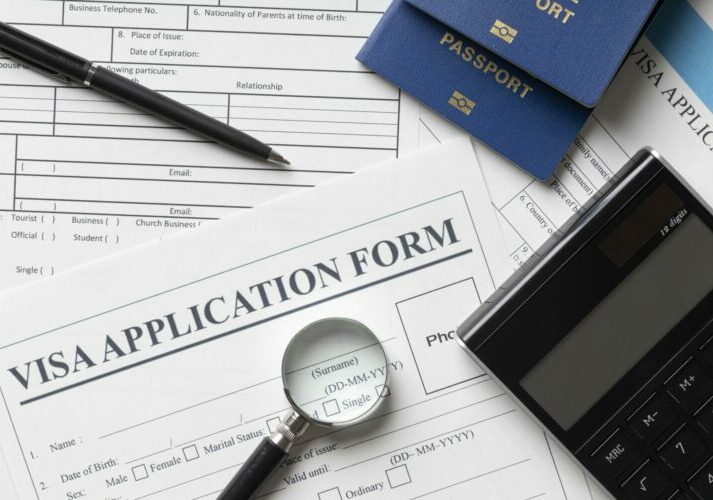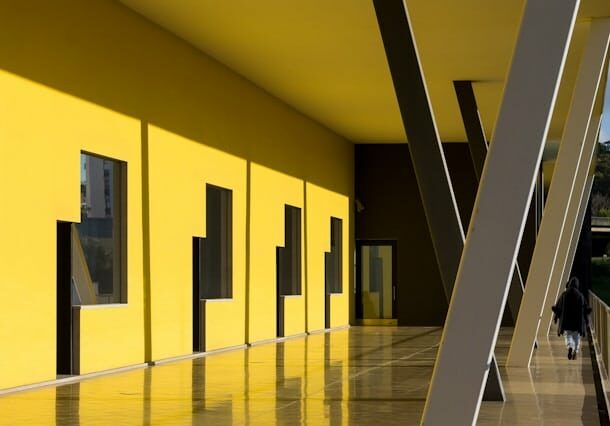Education in Italy is quite different to the rest of the world. However, it offers some of the best schools in the EU, with historic institutions to take your education to the next level.
In this guide you will learn about:
- The Italy education system
- The levels of education in Italy
- How to study in Italy as an international student
- What life is like for international students in Italy
- The benefits of studying in Italy and more
Overview of the Education System in Italy

The public education system in Italy is state funded, offering education for all at any level. However, there are options for private and international schools which are particularly popular for expats.
The Italian education system is split into five phases, including:
- Kindergarten: Ages 3-6
- Primary school: Ages 6-11
- Lower secondary school: Ages 11-14
- Upper secondary school: Ages 14-19
- University: Ages 18+
Let’s get started by taking a closer look at the education levels in Italy.
Education Levels in Italy
Pre-primary Education (Scuola dell’infanzia)

The Italian government subsidizes many preschools, offering Italian residents a cost-effective option. However, there may be a difference in cost depending on the region. For example, regions in north Italy, like Bologna, Venice, and Verona may charge more for the same service compared to regions in the south. Generally, the cost of preschool in Italy is dependent on a family’s financial situation.
Expats in Italy may choose to place their children in private schools as English is widely spoken. While Italian is spoken in public pre-primary in Italy.
Age range: 3 months-3 years (Day nursery)
Age range: 3-6 years (Nursery school)
Primary School Education (Scuola Primaria)
Italy primary schools are for students between the ages of 6-11 and are equivalent to elementary school in America. A primary school education is mandatory for all children in Italy, regardless of economic or immigration status.
Age range: 6-11
Public primary schools
Public schools in Italy are free, with primary school teachers providing a well-rounded education in Italian. Classes generally make up 24-40 hours per week with school from Monday-Friday. However, many schools also have short days on a Saturday which may make school times during the week shorter.
Private primary schools
There are also a range of private primary schools in Italy. Most expat families choose private international schools to provide their children with the same education as back home. Private schools in Italy can cost between €4,000- €27,000 per year and generally offer smaller classes than the public school system.
Under the private education system, independent schools are another option, the categories include:
- Religious schools
- Steiner Waldorf
- Montessori
Independent schools in Italy generally follow the same curriculum as public schools. However, there may be slightly more focus on additional activities including artistic development, independent learning, and building strong teacher-student relationships.
Lower Secondary School (Scuola secondaria di primo grado)
The lower secondary education system in Italy is similar to the middle school system in the US. Lower secondary school falls under compulsory education in Italy.
Age range: 11-14
Public lower secondary schools
Italy’s public secondary schools are free, offering a well-rounded range of subjects including math, science, history, geography, Italian, and foreign languages (generally English).
Private lower secondary schools
For most expats, international schools are the best option as the programs are run in English and generally follow a similar curriculum to their home country. However, the cost is something to consider as international schools in Italy can cost anywhere between €4,000-€15,000 per year, depending on location and institution.
Upper Secondary School (Scuola secondaria di secondo grado)
The upper secondary education system in Italy is equivalent to US high schools. The first two years are mandatory (until the age of 16). After this, further schooling is not mandatory.
The main difference of Italy’s upper secondary education from other education systems is that students are required to choose a specialty after the first two years. This can include interest such as:
- Language
- Science
- Visual arts/fine arts
- Business and technology
- Physical education and applied sciences
Age range: 14-19
Public upper secondary school

- Regional vocational training system: Vocational education allows students to learn a practical skill that is sought after within their home region. They generally take between 3-5 years to complete and focus on practical areas such as social work, agriculture, and food.
- Lyceums: Here, students focus on academics with the aim of furthering their education at university. Specialties include natural sciences, arts, and music.
- Artistic institutes: For students that want to focus on the arts, artistic institutes offer three-year programs to prepare students for a career in the arts.
- Technical schools: Here, students can learn the foundational knowledge before engaging in practical learning for industries like IT and engineering.
The most important part of the upper secondary education system it the state exam (Esame di Stato) also known as Maturità. Regardless of the type of institution, students must pass this exam to apply for university education or pursue their career at the end of the five years.
Private upper secondary school
Private schools at the upper secondary school level in Italy aren’t popular among Italian students but may be a good option for expat families. However, it’s important to note that regardless of the school, the institutions still break away by subject choice. Here are some of the private upper secondary school options in Italy:
- Boarding schools: Generally, for international students, lessons are usually taught in English and come with a hefty price tag.
- International schools: The most popular option for expat families. Lessons here are taught in both English and Italian.
- Religious schools: Most religious schools In Italy are Catholic. There is a general focus on religious study throughout primary and high school.
Tertiary Education and Universities
Italy is home to some of the most prestigious universities in the world. While schooling in Italy is mandatory, higher education is a choice. There are various degree options, including:
- Bachelor’s
- Master’s
- PhD programs
Each level of education will further a student’s career in their prospective field. However, the time and cost will vary dramatically based on institution and field of study.
Support for Children With Special Needs
Italy has an inclusive education system that does not discriminate against any child. There are no specialized schools for children with learning difficulties or disabilities. Rather, the public school works directly with the Ministry of Education to put a personal education plan in place on a child-by-child basis.
This inclusion ensures there is no discrimination and that every child is catered to with personalized learning goals in place.
There are some private and international schools that offer an adaptive education with supportive staff in class to aid the child individually.
Cost of Education in Italy
Let’s take a look at the various cost of education in Italy:
Education Level | Type | Average Cost Per Year |
Preschool | Public | Free or minimal fees (up to €100-€200 per year) |
Private | €2,500 - €8,000 | |
Elementary School | Public | Free (small fees for materials and trips) |
Private | €3,000 - €10,000 | |
Middle School | Public | Free (small fees for materials and activities) |
Private | €4,000 - €15,000 | |
High School | Public | Free (small fees for exams and materials) |
Private | €5,000 - €20,000 |
Scholarships and financial aid
Public education in Italy is free. However, with the rising cost of living some families may find it difficult to cover the school supplies and textbooks. For this reason, the Italian government has created a range of programs to aid lower income families with schooling costs.
There are specific regional programs that will help families with textbooks, transport, meals, and any other related schooling costs.
If you’re looking for scholarships, private international schools in Italy offer a range of scholarship programs for locals and international students.
Tertiary Education in Italy
Benefits of studying in Italy for international students
- Affordable tuition fees: One of the main benefits to studying in Italy for international students is the affordable tuition fees. When compared with other EU countries and the US, tuition fees for public universities in Italy are significantly cheaper.
- Rich cultural experience: Italy is home to one of the longest histories in the world, offering more UNESCO World Heritage Sites than any other country. International students can soak up the rich history and culture of Italy while studying abroad.
- Global recognition of Italian degrees: Italy’s higher education system follows the Bologna Process, which standardizes higher education across Europe. This ensures that degrees earned in Italy are compatible and recognized within the European Union and many other countries globally.
Overall, international students can enjoy a host of benefits when studying in Italy. From the sensational food and welcoming locals to the high standards of education and lower tuition costs.
Top Universities in Italy
Italy is home to some of the top universities in the world. Not only recognized for their fantastic education but the sheer history is something every international student can appreciate. Here are some of the top universities in Italy for international students:
Politecnico di Milano
Located in beautiful Milan, Politecnico di Milano is one of the largest technical universities in Italy. Founded in 1863, this historic institution is recognized for its innovative research and industry connections, offering students a fantastic all-round education with practical learning.
University of Bologna
If history is what you’re looking for, welcome to the oldest university in the world. Founded in 1088, the University of Bologna is one of the most prestigious universities for international students. As a leader in social sciences, humanities, and law, the University of Bologna is steeped in academic tradition, fostering excellence for nearly 1,000 years.
Sapienza University of Rome
Founded in 1303, Sapienza University of Rome is one of the largest universities in Europe. This historic institution is globally recognized for its research excellence, attracting international students from across the world. The wide variety of programs along with the central location in Rome, make it one of the most popular options for international students in Italy.
Scholarships for International Students in Italy
International students are in luck. There are various scholarships for international students in Italy. Here are some of the top ways to get scholarships to study in Italy:
- Government: The Italian Government offers scholarships to foreign students. They are available for various levels of education and generally cover tuition fees, cost of living, and health insurance.
- Private scholarships: You can apply for university-specific scholarships. These are generally based on your educational merit and financial circumstances. Private universities may waive all or partial tuition fees.
There are a range of Italian scholarship programs available depending on your needs and what you aim to achieve. Your best chance to explore the options is looking at online forums for real life examples to see how previous students have gone about acquiring scholarship in Italy.
Italy Scholarships for international students: Application process

- Step one: Research opportunities to ensure you are applying for the best scholarship for your needs and achievements.
- Step two: Prepare the required documents, ensuring everything is included. This usually includes academic transcripts, proof of financial need, letters of recommendation, a resume, a statement of purpose, and language proficiency tests.
- Step three: Apply to your chosen university. Most scholarship programs require a letter of acceptance before proceeding with the application.
- Step four: Apply for the scholarship, ensuring all documents and applications are provided in full.
- Step five: You may need to attend interviews before you are accepted into the scholarship program.
- Step six: Once you have a scholarship you need to apply for the relevant Italy study visa.
Tips for obtaining a scholarship in Italy
Getting a scholarship to study in Italy is an extremely prestigious award, so the competition is fierce. Your application should provide evidence of why you deserve the award over anyone else.
While most think this means receiving the best marks, this isn’t the only factor. Often, it is the letters of recommendation and the statement of purpose that sways the vote. Providing an inspirational explanation as to why studying in Italy would not only benefit you but the university and possibly even Italy may just be the ticket to getting an academic scholarship in Italy.
Remember, scholarships are generally awarded to those that want to make an impactful contribution to their field. This means showing you are passionate about what you want to do and having confidence in your abilities to provide an outstanding result.
Lastly, getting a scholarship is a process, don’t wait for the last minute. You need to collect your evidence and ensure you have enough time to provide a full and exemplary application.
Admission Requirements for International Students

International students from outside the EU are required to obtain a Type D visa from the Italian consulate. This permits non-EU nationals to stay in Italy for longer than 90 days. In order to obtain the long stay visa, the student must provide the following:
- Enrollment at a legitimate higher education institution
- Proof of accommodation
- Proof of funds (minimum of €467.65 per month)
- Proof of language proficiency in Italian or English (Depending on the course)
- Private health insurance
- Adequate financial means for repatriation if necessary
Applying for the Italian Type D Visa is quite straight forward for most international students. However, you must ensure that all documents and forms are provided in full to avoid any delays.
If you’re planning to stay on in Italy after your studies, the Italy Golden Visa may just be the ideal option. This investor program offers a great opportunity for non-EU/EAA and non-Swiss nationals to obtain a residence permit.
Comparing Education in Italy vs. the US
Differences in Education Systems
Length of degree programs
The length of degree programs in Italy vs the US are quite significant. Let’s take a look:
Programs | Length of degree in Italy | Length of degree in the US |
Bachelor’s Degree | Typically completed in 3 years | Generally, takes 4 years |
Master’s Degree | Requires an additional 2 years after completing a bachelor’s degree | Can take between 1- 2 years |
PhD | Generally, lasts 3 years or more | Typically lasts 4-6 years, depending on the field of study |
Tuition costs and living expenses
The cost of studying is one of the top searches for international students. Let’s take a look at the differences in tuition and living expenses for Italy vs the US:
Item | Cost Italy | Cost USA |
Public university | €900-€4,000 per year $998-$4,437 | €9,916-€21,600 per year $11,049-$23,960 |
Private university | €6,000-€20,000 per year $6,655-$22,186 | €39,000 per year $43,262 |
1 bedroom apartment (city center) | €745 $826 | €1,579 $1,751 |
1 bedroom apartment (outside city center) | €564 $625 | €1,298 $1,439 |
Cost of living single person without rent | €858 $851 | €1,170 $1,297 |
Internet | €27 $29.95 | €63 $69.89 |
Utilities | €199 $220.75 | €186 $206.33 |
Public transport (monthly pass) | €35 $38.83 | €59 $65.45 |
Studying in Italy gives international students a chance to truly embrace the Italian way of life. Living in Italy is an incredible experience that is a once in a lifetime opportunity for most.
Cultural Experience: Life as a Student in Italy vs. the US
There are some differences to consider before applying to study in Italy. The difference in extracurricular activities and social life are two of the main differences.
In Italy, there is far more emphasis on theoretical knowledge, with most students majoring in their field of study from the start. While there are extracurricular activities there is far less involvement between university and student life. This does however foster a more independent lifestyle for students in Italy.
In the US, extracurricular activities are one of the top priorities for major institutions. Higher education in the US is more flexible that in Italy, with many students majoring in year two or three. The university and college lifestyle in the US is very prominent, with student life and university culture merging into one student experience.
If you do decide that life in Italy is the right option for you, there are options available. For example, the Italy citizenship by investment program provides a path to citizenship for foreign residents in Italy. After a period of five years of naturalization, obtaining an Italian passport is in sight.
Frequently Asked Questions About Education in Italy
Is Italy’s education system good?
Yes, Italy’s education system is generally considered good. Particularly for fields like art, design, and humanities. Italy boasts a strong academic tradition, affordable tuition at public universities, and adherence to European standards. However, the system can be rigid and varies in quality between regions.
Is education in Italy mandatory?
Yes, education is mandatory in Italy for children between the ages of 6-16. This means primary school and secondary school in Italy is a non-negotiable for local children and expats. As of 2023, there are close to eight million students in the Italian school system.
How many grade levels are there in Italy?
Italy’s education system is divided into five stages, including, nursery school, pre-primary, primary school, secondary school (lower and higher), and university.
Is university free in Italy?
No, university in Italy is not free. However, for residents there are various incentives that lower the cost of studying dramatically. There are also a range of scholarship opportunities available to local and international students.
How long is a school day in Italy?
A typical school day at primary and secondary schools in Italy is around 5-6 hours. School starts at about 8am and ends at 1pm, with a lunch break in between. Italian schools are usually open from Monday to Saturday. However, some schools may choose to have longer school days in the week to avoid Saturday classes.
Are there scholarships for international students in Italy?
Yes! There are a range of scholarship options for international students in Italy. From government programs to institution-specific scholarships, it’s important to find the right option for your needs and educational future.
Do international students in Italy need to learn Italian?
If you’re planning to attend a public university in Italy then yes, you will need to learn Italian. You may be required to submit a language test. However, there are some higher education institutions that offer classes in English.
Is it easy for international students to get a student visa for Italy?
The process of getting a student visa in Italy isn’t difficult. However, you need to ensure that your application is complete, and you submit the required documents.
Can international students work while studying in Italy?
Yes, the Italy study visa permits international students to work up to 20 hours per week part time.
How does the education system in Italy compare to the US?
The Italian education system is quite different from the US in terms of cost, structure, and grading. The education system in Italy is based on EU standards which is significantly different to the US, particularly when looking at courses and class structure.
Is the US or Italy more affordable to study?
Studying in Italy is far less expensive than the US. The cost of attending university in Italy is a fraction of the cost for the US equivalent. Additionally, the cost of living in Italy is 17 percent lower than the US, reducing the overall cost.
How many international students study in Italy each year?
Around 30,000 international students head to Italy each year. Italy is one of the most sought-after countries for international students, thanks to its fantastic education system, incredible history, and overall quality of life.


